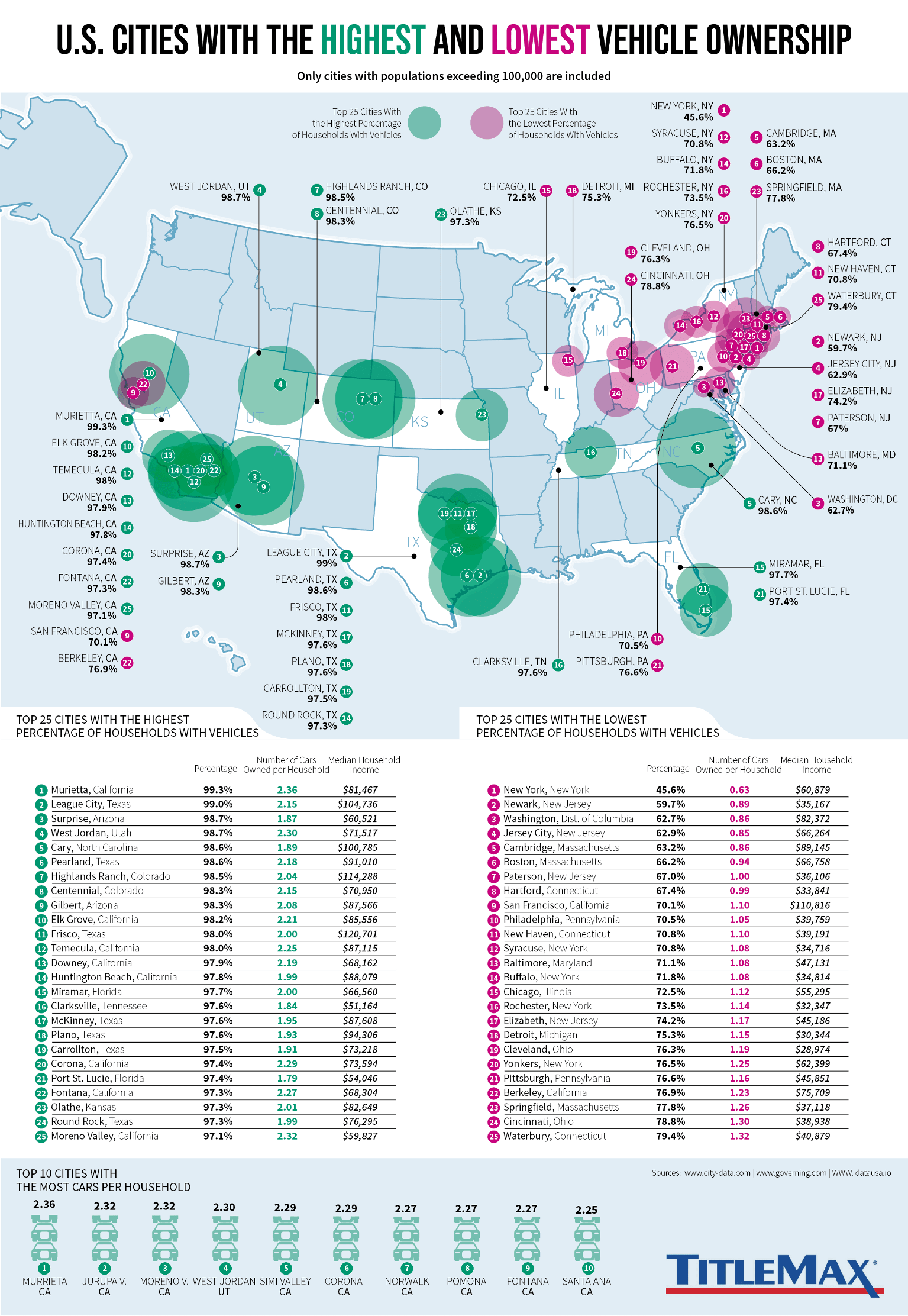this post was submitted on 28 Aug 2023
301 points (97.8% liked)
Data Is Beautiful
6884 readers
191 users here now
A place to share and discuss data visualizations. #dataviz
(under new moderation as of 2024-01, please let me know if there are any changes you want to see!)
founded 3 years ago
MODERATORS
you are viewing a single comment's thread
view the rest of the comments
view the rest of the comments

The city I'm in is listed (more car ownership) and I'm fairly confident the same reason for all of those higher ownership cities is the same.
Northeastern cities grew before the advent of the car and needed mass transit to function.
No one wanted to sweat their butts off in southern cities, so those only grew after residential air conditioning became more available. This was around the 50's and tracks with when these cities expanded.
Because the predominant mode of transportation at the time was cars, you have cities that were developed that way with the interstate highway program helping.
Lastly, General Motors also put their hand in there to ensure more sales (in multiple cities). There's a good documentary on what they did in Los Angeles. The folks of that city can thank GM every time they waste away on the 405.
The film Chinatown was originally supposed to be part of a trilogy of corruption in early Los Angeles. Chinatown was about water, The Two Jakes was about oil, and a third film about transportation that was never produced.
While the third film was never fully realized, Robert Zemeckis used the idea as inspiration for Who Framed Rodger Rabbit. Rodger Rabbit is a neo-noir set in early LA, at one point Bob Hodkins says something along the lines of "Don't you know LA has the best public transit in the world!"